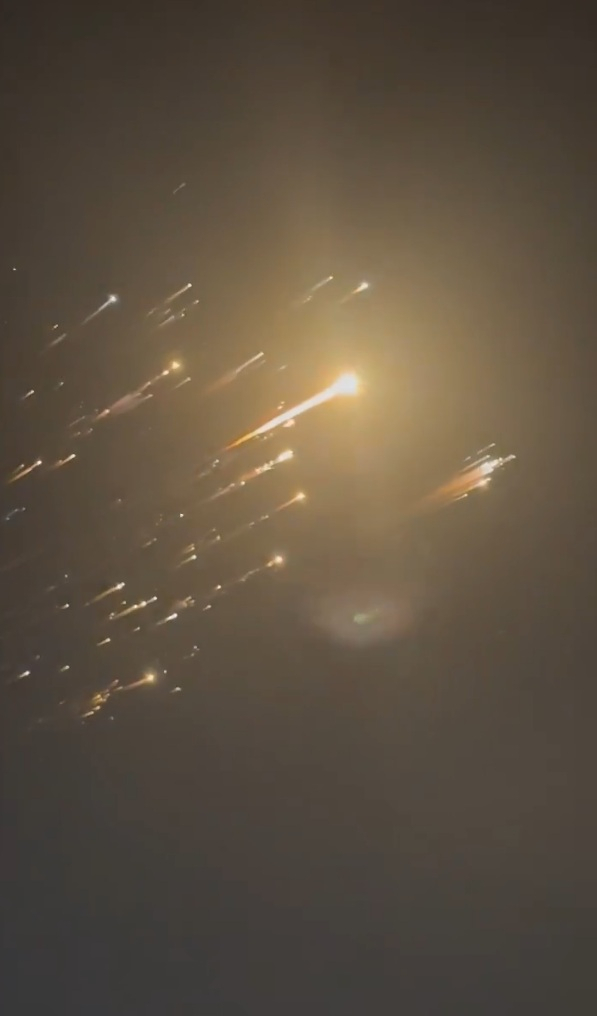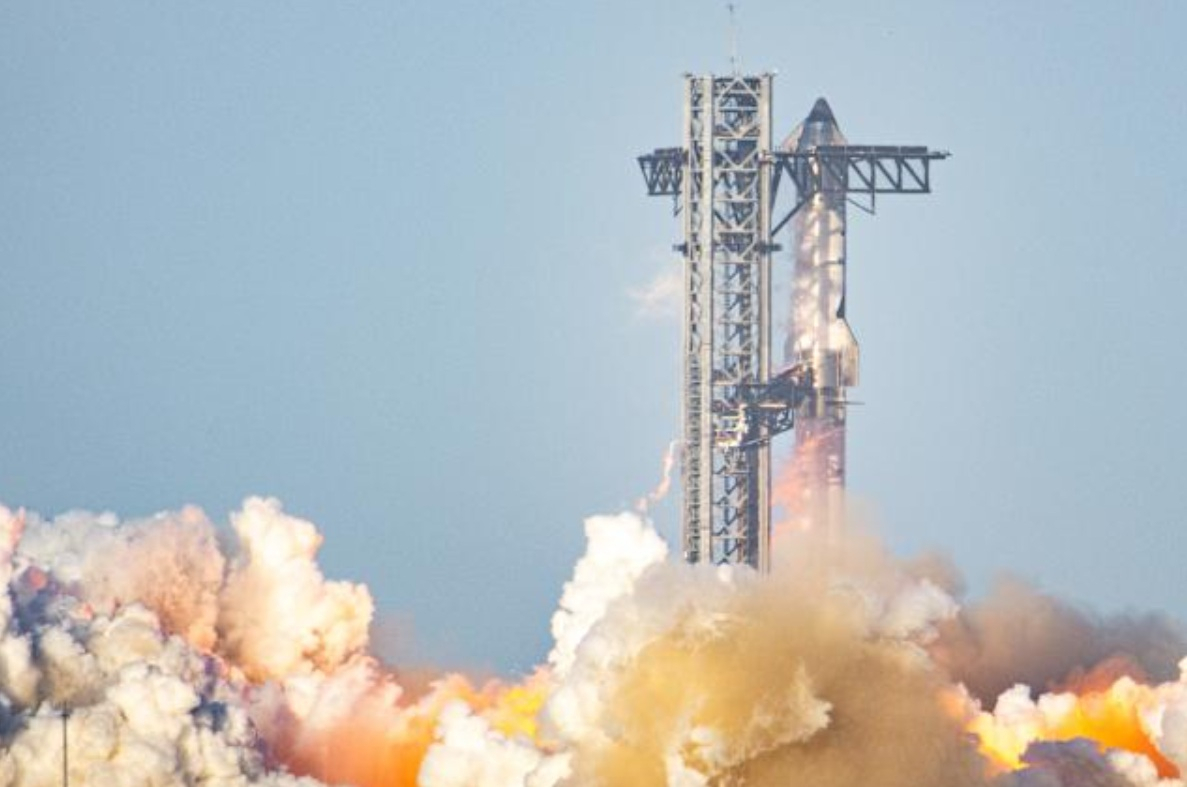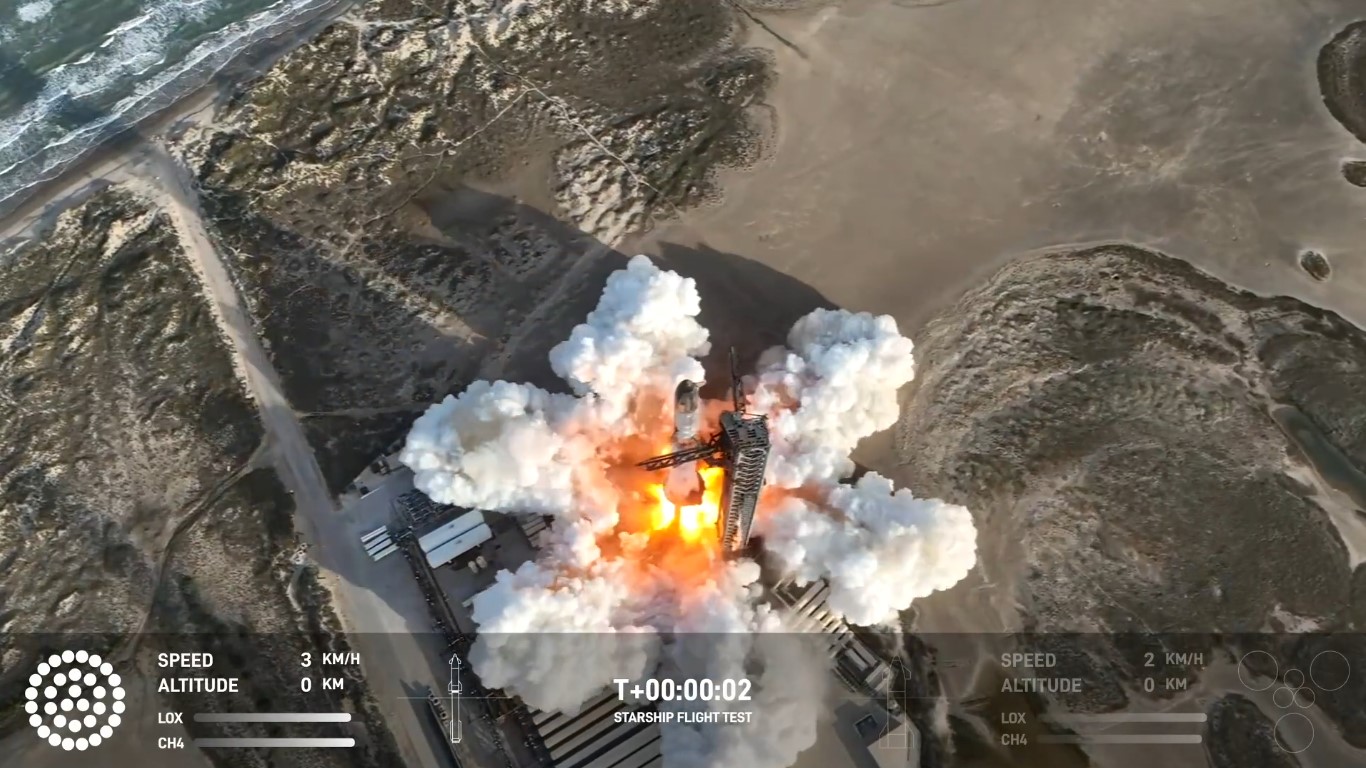SpaceX’s massive Starship rocket exploded just 10 minutes after launching on Thursday night, marking the second failed test flight in two months. The Starship rocket lost control after several engines stopped working just 20-seconds before the end of ascent burn in its eighth test flight and exploded, leading to flight disruptions and as fragments fell back to Earth.
The mission initially appeared successful but ended in major disappointment as Musk continues pursuing his ambition of sending humans to Mars. As a result of the explosion, a ground stop had to be enforced at several Florida airports—including Miami, Orlando, Palm Beach, and Fort Lauderdale—due to falling debris on earth.
Disappointment for Musk
X
“During Starship’s ascent burn, the vehicle experienced a rapid unscheduled disassembly and contact was lost,” a statement from SpaceX posted to X read. “Our team immediately began coordination with safety officials to implement pre-planned contingency responses.”
“We will review the data from today’s flight test to better understand root case. As always, success comes from what we learn, and today’s flight will offer additional lessons to improve Starship’s reliability,” the statement concluded.
During the live broadcast of the flight, nearly one million viewers tuned in as the spacecraft appeared to spin out of control before the feed abruptly cut off.
The Starship was intended to land in the Indian Ocean, but videos circulating on social media claim to show its fiery debris streaking across the night sky over the Atlantic. Observers in Turks and Caicos and the Bahamas watched in awe as the glowing wreckage plummeted toward Earth.
According to the Federal Aviation Administration, multiple Florida airports experienced temporary flight groundings on Thursday due to “space launch debris.”

X
SpaceX lost communication with Starship 8 before it could release its test satellites, which were scheduled for deployment at the 17-minute mark.
Prior to the explosion, SpaceX successfully executed its third-ever retrieval of the Super Heavy booster. This powerful rocket, powered by 33 Raptor engines, made its way back to the Texas launch site, where the “chopsticks” mechanical arms securely captured the reusable propellant.
Problems Continue for SpaceX

X
Earlier in the week, SpaceX had to delay the launch on Monday due to undisclosed issues with the Super Heavy booster, which were detected by onboard computers just 23 minutes before the planned liftoff.
Musk’s aerospace company thrilled skywatchers last October during its fifth test when it successfully captured the booster rockets for the first time, while the Starship itself achieved a smooth landing in the Indian Ocean.
During the next launch—watched by then-President-elect Donald Trump and his family from Starbase—SpaceX opted to cancel the planned booster catch, instead allowing them to splash down in the Gulf.

In the seventh test, the company managed to secure its second successful booster retrieval. However, the mission was far from perfect, as it ultimately led to the destruction of the main Starship rocket.
The upgraded Starship suffered a propellant leak during its ascent, leading to its disintegration and explosion over the Atlantic Ocean. Burning debris from the wreckage was spotted from the Turks and Caicos Islands.
Starship is built for full and rapid reusability, allowing SpaceX to cut down on costs and resource consumption. This efficiency is key to the company’s long-term objective of advancing space travel to the Moon and Mars.







